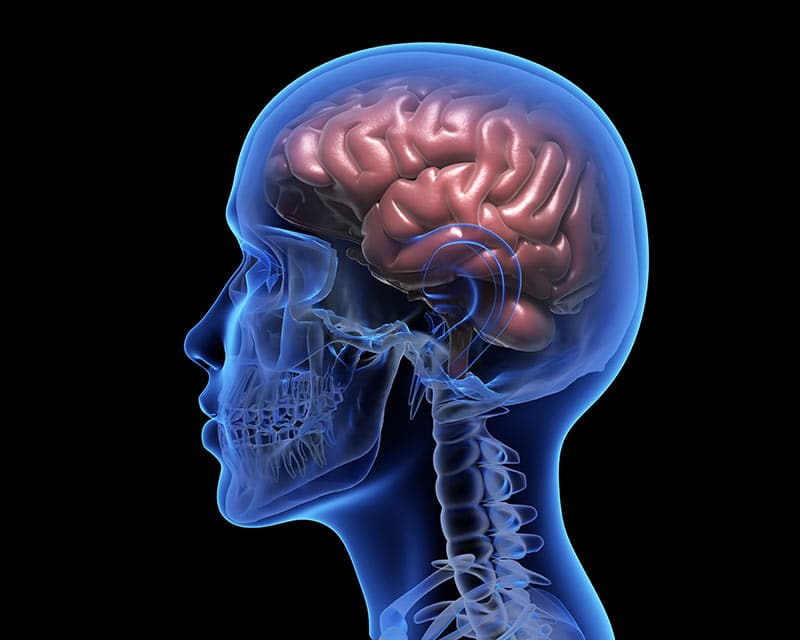Living with a loved one suffering from the degenerative condition of Alzheimer’s disease is devastating. It can leave you feeling helpless as you slowly watch the tapestry of a rich blanket of life memories slip away.
Disconnected and disassociated from shared experiences with your family member feels like the door is shutting you out into the cold, with little power to make a change.
Fragmented memories, lost time, and confusion will leave the patient suffering from Alzheimer’s disease feeling helpless and out of control. There is no shortage of descriptive terms to describe the barren landscape of the emotional body of those in association with individuals suffering from this degenerative disease or individuals who directly experience the slow loss of their cognitive function.
Understanding how infrared sauna therapy can have a positive impact on the prevention and treatment of Alzheimer’s disease requires a paradigm shift from a Newtonian perspective on human physiology to a quantum understanding.
Taking a brief gaze upon the mechanism behind the source of Alzheimer’s disease, coupled with an understanding of the relationship between the infrared spectrums on the physical network of the body, will provide a clear picture as to why infrared light therapy has the potential to be helpful in the treatment and prevention of Alzheimer’s disease.
If it were possible to alleviate the suffering of individuals affected by age related dementia then it would be well worth a thorough investigation into possible treatments. Research performed by scientists and medical professionals in the field of biomedicine on the subject of infrared light therapy and Alzheimer’s disease have produced intriguing results. Preliminary findings suggest there may be a correlation between regular and high frequency use of infrared light therapy for the treatment of Alzheimer’s disease.
What Is Alzheimer’s Disease?
Alzheimer’s disease is an illness that affects the cognitive centers of the brain: It is degenerative and slowly degrades the memory, both short and long term, eventually inhibiting its victim from performing basic daily tasks. Alzheimer’s is currently understood to be the most common underlying cause of dementia (a general term used to describe the loss of cognitive function severe enough to interfere with performing tasks in daily life) (1).
This slow degenerative disease is not a natural part of aging, although it affects individuals older than 65 years of age in general. It is believed that long before any symptoms are expressed, the disease has already made its mark on the microscopic level of the brain. On average, patients diagnosed with Alzheimer’s disease die between four and eight years after diagnosis. This disease is progressive and degenerative as it slowly erodes the function of the brain and ultimately the life of the individual.
Patients suffering from Alzheimer’s will begin to experience short-term memory loss, usually beginning with small, inconsequential gaps. With the passage of time, both short and long-term memory is evasive. As years pass, and the disease takes hold of the patient’s brain, conversation becomes impossible as patients lose their ability to respond to the environment around them.
Today, there is no known allopathic medical cure for Alzheimer’s disease. Patients and their families learn to manage the degenerative condition that leads to the death of brain neurons and eventual death of the person. There are exciting developments in the field of biomedical research demonstrating potential positive impacts of broad spectrum infrared sauna therapy both as a preventive measure and ultimate cessation of symptoms (2).
Alzheimer’s Disease And The Brain
To say the human brain is complex would be an understatement. We need to learn to understand the physical brain as a composition of billions of cells involved in an intricate dance, rather than a stagnant piece of matter. The brain has 100 billion nerve cells that we call neurons. The network of neurons is active and synergistically works in harmonious relationship to itself: This allows us to think logically, hold memory and learn (3).

The evolved intricacies of the network of nerve cells in the brain are in constant communication with each other. Each nerve cell connects to another nerve cell to communicate essential information. Groups of nerve cells are responsible for different functions that serve individuals to perform both basic and complex tasks.
This perfectly orchestrated coordination of neurological communication requires fuel to stay in motion, namely: oxygen. Long before any symptoms of Alzheimer’s disease becomes apparent to the patient; microscopic changes in the brain have already begun.
In neuroimaging of the Alzheimer’s diseased brain can be seen a buildup of plaques and tangles, in short the presence of these proteins in the brain have been hypothesized to be neuron ‘killers’.
The Alzheimer’s Association of America talks about the death of neurons as being at the root cause of Alzheimer’s disease:
“It’s the destruction and death of nerve cells that causes memory failure, personality changes, problems carrying out daily activities and other symptoms of Alzheimer’s disease.” (4)
Neurons operating in a healthy coordinated fashion generate proper brain function. If neurons are dying faster than they are regenerated, Alzheimer’s occurs. The slow death of the brain (a composite of 100 billion neurons) leaves patients unable to hold memories. The brain is necessary for the survival of the entire body: As neurons die off at rapid rates the patient is unable to substantiate the function of the entire body and therefore dies.
Necessary to cure and treat Alzheimer’s disease is neurogenesis (creation of new brain cells) to keep the brain alive and well. Communication between the intricately connected nerve cells in the brain is necessary; if there is a break down in one group of neurons the entire brain is affected. Exploring treatment methods that increase neurogenesis is paramount: Infrared sauna therapy does just this. Infrared light waves interact with the body to spark oxygenation of the cells and ultimately the creation of new nerve cells in the brain.
Further research suggests that chronic inflammation due to a lack of well-oxygenated blood is a contributing factor in the development of Alzheimer’s disease. Therapies that increase the oxygenation of the cells and therefore decrease inflammation in the body also help treat and prevent Alzheimer’s. Infrared wavelengths interact with the cellular structure of the body to heighten ATP production, and therefore, enhance oxygenation of the blood.
Oxygenation of the hemoglobin coupled with neurogenesis give infrared sauna therapy the potential to be an effective preventative treatment of Alzheimer’s disease and potentially a source of remission for individuals already within the clutches of this unforgiving illness (4).
Ground breaking research emerged from a study performed in Finland in 2016 revealed the impact that sauna therapy has on the prevention and ultimate treatment of Alzheimer’s disease.
In the words of Dr. Andrew Weil, MD:
“Here is the story: the men were between the ages of 42 to 60 when they joined a study of heart disease. Researchers from the University of Eastern Finland and the University of Bristol in the U.K. followed the men for almost 21 years to determine whether saunas are associated with the risk of dementia and Alzheimer’s disease. They found that men who used saunas an average of four to seven times per week were 66 percent less likely to develop dementia and 65 percent less likely to develop Alzheimer’s disease. In comparison, men who used saunas only once a week were 22 percent less likely to develop dementia and 20 percent less likely to develop Alzheimer’s than men who didn’t use saunas at all. The researchers reached these conclusions after controlling for risk factors such as age, alcohol consumption, body mass index, systolic blood pressure, smoking, diabetes, previous heart attack, resting heart rate and cholesterol.” (5)
Exposure to heat stress or heat shock in a controlled environment may increase neurotrophic factors to create an effect that provokes brain stem cells to produce new neurons. Exposure to increased heat may directly cause an increase in brain cell production during the sauna session.
The saunas used for the study mentioned above were traditional dry Finnish saunas. The impact of heat therapy on the body clearly demonstrates strong correlations with the prevention of Alzheimer’s disease. Infrared saunas are one of many heat therapy options available. It is unique, however, among thermal therapy because of the combination of benefits derived from traditional heat therapy modalities coupled with the unique effects of the infrared light spectrum on the cellular structure of the brain.
Infrared sauna therapy provides the same benefits as traditional saunas and a steam room with the profound and powerful addition of the penetrative wavelengths of the infrared spectrum.
What Makes Infrared Sauna Therapy So Special?
In the late 19th century Dr. Harvey Kellogg invented the first infrared light therapy, he called it the ‘Incandescent Light Bath’. This state-of-the-art invention gained worldwide acclaim for its healing effects on the totality of the body. It was not until 1965 when NASA studied the effects of the light spectrum on astronauts experiencing musculoskeletal atrophy upon returning from space that infrared sauna therapy had an unequivocal impact in the field of biomedicine. It was revealed through NASA’s research on the light spectrum that the infrared spectrum had profound, long lasting health benefits on the general populace (6).
Near, mid, and far infrared light is invisible to the human eye, but is experienced kinetically as heat. This radiant heat emanating from the infrared spectrum is entirely different from the convectional heat experienced through traditional saunas. Infrared wavelengths penetrate beyond the initial epidermis of the skin into the soft tissue of the body. This transmission of light into the body’s network sparks profound cellular transformation, which distinguishes it from other forms of heat therapy.
Infrared Light Ignites The Energy Plants In The Body: Healthy, High Functioning Mitochondria May Prevent Alzheimer’s Disease

Dysfunction of the mitochondria within the cells of the body is considered to be a potential cause of Alzheimer’s (7). The human physical body is comprised of over 50 trillion cells, each cell in the body has what could be considered an, ‘energy plant’: the mitochondria, where ATP (Adenosine Tri-Phosphate) occurs. The mitochondria are very sensitive to all light and particularly sensitive to deeply penetrating rays of infrared. As soon as the body is exposed to infrared light, ATP production is exponentially stimulated.
As ATP production occurs in response to infrared light exposure, nitric acid is released thereby hyper oxygenating the hemoglobin. The freshly oxygenated blood cells begin to flow throughout the body like a fast moving river. Inflammation in the body occurs due to a lack of oxygen in the injured area. Within minutes of entering into your infrared sauna, ATP production hyper-oxygenates the blood: This creates better and faster flowing circulation of the blood throughout the body and reduces inflammation throughout the body, including the brain(8).
Scientists and medical researchers understand that a lack of oxygenated blood causes inflammation in all parts of the body.
Infrared sauna therapy oxygenates the blood stream to reduce inflammation, one of three primary causes of Alzheimer’s disease.
It has been strongly suggested through scientific research that all heat therapy reduces the risk of Alzheimer’s in men engaged in moderate to high frequent sauna use. Infrared sauna use encompasses the benefits of exposure to controlled heat with the addition of the infrared light spectrum as medicine to the body’s cellular structure.
A Ray Of Hope For Families And Individuals Living With Alzheimer’s disease: Neurogenesis And Infrared Sauna Therapy

Until 1960, it was believed that neurogenesis was not possible. Any dementia diagnosis was a life sentence. Scientists now understand that brain nerve cells are able to reproduce in reaction to the appropriate environmental factors. It turns out that exposure to the infrared light spectrum does spark neurogenesis through the process of mitosis.
Joseph Altman and his team of scientists discovered that through mitosis, the process of cell splitting where genetically identical daughter cells are created, demonstrated unequivocally that adult neurogenesis is possible.
Neuronal cell death is the villain behind the ravages of the cognitive degenerative disease of Alzheimer’s: Exposure to heat therapy coupled with the penetrative rays of infrared light therapy impacts the cellular structure of neurons to procreate through mitosis: Neurogenesis is possible, if neurogenesis is possible than so too is a cure for Alzheimer’s disease (8).
Infrared Light Bath Therapy: A Potentially Viable Treatment For Alzheimer’s Disease?
Scientists and bio-medical researchers can now definitively demonstrate the effects of infrared light through studies performed on mice. Here is what they found:
(A) Exposure to infrared light decreases brain levels of ‘plaques’ and ‘tangles’ (found in the Alzheimer’s diseased brain) thereby improving cognitive deficiencies.
(B) Cellular energy, as demonstrated in ATP production was increased in these studies. Heightened health of the mitochondria in individual cells was improved through exposure to infrared light, without the heat element (9).
The three primary underlying causes of Alzheimer’s disease is now believed to be:
- The growing presence of plaques and tangles in the brain
- Neuronal death
- Inflammation due to low functioning mitochondria unable to maximize ATP production and oxygenate the brain.
Scientists and researchers in the field of biomedicine can now measure that exposure to the infrared light spectrum; (even without the element of heat) has the power to effectively reverse the three primary causes of Alzheimer’s disease on the brain (9).
Exposure to infrared light has the following effects:
- Decreases the culmination of plaques and tangles in the brain.
- Neurogenesis
- Maximizes ATP production by stimulating the mitochondria of the cell.
Research in the field of biomedicine and infrared light therapy is revelatory and groundbreaking in terms of available treatment for the degenerative condition of Alzheimer’s disease. Through an understanding of the primary causes of illnesses, the gateway into treatment is opened.
Infrared sauna therapy may directly address the underlying causes of Alzheimer’s disease thereby making it a viable treatment both in the prevention and cessation of symptoms of Alzheimer’s disease.
Infrared Sauna Therapy: A Gentle Approach for the Elderly and Those Suffering From Heart Conditions
Infrared saunas do not need heat to be effective. This means that it is a great treatment option for the elderly and those suffering from heart conditions who cannot be exposed to extreme temperatures as is the case in the traditional sauna.
Infrared saunas are better understood as a light bath rather than a heated room. Infrared saunas do not depend on heat to be effective in their treatment of Alzheimer’s disease. This is excellent for those who are sensitive to heat or unable to be exposed to heat therapy. It is the relationship of the emanating and penetrative hues of the invisible spectrum of infrared light that ignites the biochemical changes in the body and brain that are beneficial for the treatment of Alzheimer’s disease.
Alzheimer’s disease is primarily an affliction of the elderly; this demographic is traditionally unable to endure the vigorous traditional sauna or steam rooms. Sitting in an infrared sauna with a low temperature will still envelope the individual in a bath of infrared light to generate the transformational effects necessary to address the underlying causes of this degenerative disease.
With regular and high-frequency exposure to the infrared light spectrum will create the accumulative effect of high functioning mitochondria (increased oxygenation of the body and reduced inflammation), neurogenesis (the creation of new brain cells) and the reduction of plaques and tangles found in the Alzheimer’s brain.
Infrared saunas do not rely on heat but rather the energy field of the light spectrum to ignite the necessary biochemical changes in the body to treat and prevent Alzheimer’s disease, thus making it an ideal option for those unable to withstand traditional heat therapy modalities.
Infrared Sauna Therapy: A Bright Future For The Potential Treatment Of Alzheimer’s Disease

Steep the body in the gentle rays of the infrared light spectrum and experience the necessary biochemical transformation in the body and brain to effectively reverse the devastating toll Alzheimer’s disease has on its patients. Groundbreaking research in the field of biomedicine has revealed the positive effects of exposure to infrared light in the prevention and treatment of Alzheimer’s.
While the scientific findings regarding the Alzheimer’s brain and infrared light are inspirational, it is also worth noting the comfort and pleasure derived from spending time in an infrared sauna for both the patients and family members.
Stress response is a natural reaction when faced with the horror and loss associated with any kind of degenerative disease, particularly one that reduces the function of memory and conversational engagement. The infrared sauna will coax the body out of stress back into states of harmony and peace where clarity resides.
If you or a family member has been diagnosed with Alzheimer’s disease, the whole family, including the patient can benefit from the relaxing and refreshing time spent in the transcendental space of an infrared sauna.
For many years, as a society we believed that neurogenesis (the creation of new brain cells) was impossible; this meant that the diagnosis of Alzheimer’s disease was a life sentence. We now know that the creation of new neurons is possible, and this fact changes the paradigm of an Alzheimer’s diagnosis. Today, infrared sauna therapy is among the safest and most effective methods of inducing neurogenesis, thereby making it a leader in the treatment and prevention of Alzheimer’s disease.
From helpless sorrow to the light of hope, infrared sauna therapy brightens the future of Alzheimer’s disease both as a preventive treatment and an open door for patients and family members to step through and begin treatment even in the depths of the degenerative disease.
If you or someone you love is suffering from Alzheimer’s disease please consult a healthcare professional before undergoing an infrared sauna treatment.
Sources:
- https://www.alz.org/alzheimers-dementia/what-is-alzheimers
- https://www.ncbi.nlm.nih.gov/pmc/articles/PMC6664299/
- https://www.ncbi.nlm.nih.gov/pmc/articles/PMC3181599/
- https://www.alz.org/alzheimers-dementia/what-is-alzheimers
- https://www.drweil.com/health-wellness/health-centers/aging-gracefully/can-saunas-help-prevent-dementia/
- https://science.nasa.gov/ems/07_infraredwaves
- https://www.sciencedaily.com/releases/2017/12/171206132526.ht
- https://www.lumenphoton.com/blog/brain-regeneration-can-infrared-light-reverse-parkinsons-and-alzheimers/
- https://www.tmc.edu/news/2018/03/shining-new-light-halting-progression-alzheimers-disease/
Additional Reading:


